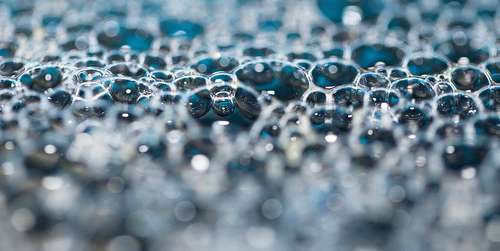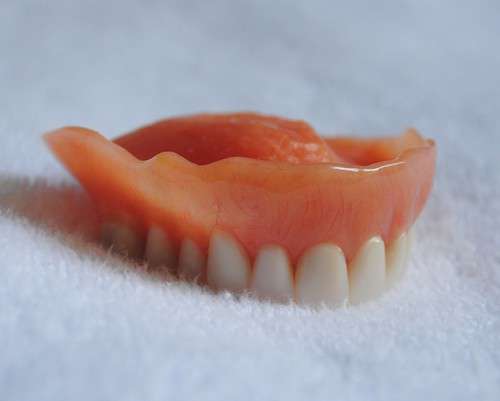
Denture cleaners must display effective cleaning and disinfecting abilities without compromising the color stability of dentures. Image Source: Flickr user Keith Williamson
The color of dentures has been a major concern throughout the history of dental prosthetics, which began as early as 1500 BC when Egyptians fashioned dentures out of human teeth threaded on gold wire. Owing to both their functional and aesthetic properties, teeth obtained from other beings—human or animal, dead or alive—remained the primary source of denture materials across cultures for over 2000 years. When Alexis Duchâteau created the first set of porcelain dentures in late 18th century Europe, they were overwhelming rejected in favor of real teeth gathered from corpses, prisoners, and even live voluntary donors, in part because the porcelain was considered by many to be “too white to be convincing”.1 It wasn’t until the late 1800s, when technological advances allowed for the creation of more naturally colored false teeth, that we began to see a true shift away from the prosthetic use of human and animal tissue. Today, dentures are extraordinarily sophisticated appliances typically created with acrylic resin shaded to produce a range of hues approximating human tissue, allowing for a convincingly real appearance in full dentures as well as precise color matching between restorative components and natural tissue in partial dentures. However, the initial pigmentation of dentures is only the first step; color stability is paramount for continued aesthetic success.

Both the artificial tooth and base resin must maintain color stability through regular exposure to dental cleansers. Image Source: Flickr user Kathy McGraw


